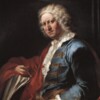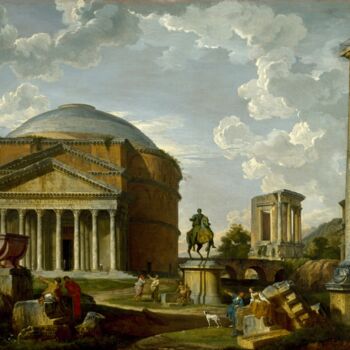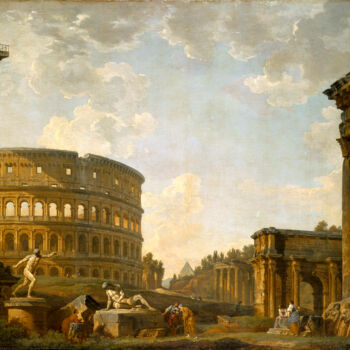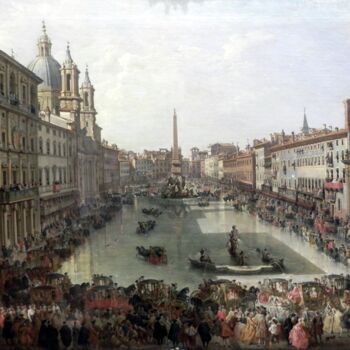Les noces de Cana (1725) Painting by Giovanni Paolo Panini
Sold by Artmajeur Editions
Sold by Artmajeur Editions
-
Original Artwork
Painting,
Oil
- Dimensions Height 39.1in, Width 54in
- Framing This artwork is not framed
- Categories Classicism Architecture
Dans cette œuvre, Panini parvient à combiner habilement l'élément religieux avec son talent pour la peinture de veduta, qui met en valeur les détails architecturaux et les scènes urbaines. Le banquet de mariage se déroule dans un cadre somptueux, avec une attention particulière portée aux éléments décoratifs, aux colonnes élégantes et aux éléments architecturaux qui ornent la salle.
Les personnages présents à la célébration, qu'ils soient convives, serviteurs ou témoins du miracle, sont habilement intégrés à la composition, contribuant à l'ambiance festive et spirituelle de la scène. La palette de couleurs vives et chaleureuses ainsi que la lumière douce renforcent le sentiment de joie et d'émerveillement qui émane de l'événement.
Related themes
Giovanni Paolo Panini (1691 - 1765) was an Italian painter and architect, known for his contributions to the genre of veduta painting, which depicted detailed and often imaginary views of cities, ruins and architectural wonders. He was born in Piacenza, Italy, and showed an early aptitude for art. He first trained under the tutelage of his uncle, himself a painter, before studying in Rome.
Panini became known for his great ability to represent architectural elements with precision and realism. He often incorporated ancient Roman ruins and famous monuments into his compositions, creating scenes that combined historical accuracy and imagination. His works frequently featured bustling markets, grandiose palaces and iconic buildings, all rendered in meticulous detail.
One of Panini's notable achievements was his role as set designer for various productions theaters in Rome. His understanding of perspective and architectural detail allowed him to create illusionistic settings that captivated audiences.
His fame extended beyond the borders of Italy, and his veduta paintings attracted audiences. patrons from all over Europe, including nobility and collectors. As his reputation grew, Panini was appointed principal veduta painter to several popes, solidifying his position as a preeminent artist of his day.
The Legacy of Panini is mainly linked to his extraordinary ability to capture the grandeur of architecture and urban spaces in his paintings. His works have become valuable historical documents, providing insight into how cities and monuments looked in the 18th century. Today, many of his paintings can be found in prestigious museums and private collections around the world, testament to his lasting influence on the veduta genre and his lasting impact on the world of art. art.
-
Nationality:
ITALY

- Date of birth : 1691
- Artistic domains: Represented by a Gallery,
- Groups: Contemporary Italian Artists Artists presented by a gallery









